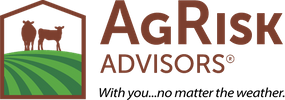News & Events
How To: Livestock Risk Protection (LRP)

One of the primary benefits of Livestock Risk Protection is its simplicity. Managing your operation’s price risk with LRP can be explained in 3 steps. First, we begin with the application process, next is a review of establishing coverage, and last, we’ll review what occurs if there is a loss.
First, we begin with the application. This process is very straightforward – completing an application comes with no obligation and qualifies you to bind coverage in the future. The insured’s name, tax identification number, and contact information are placed on the application, and this is all you need to begin! After you submit the application, you’re ready to track and review your coverage options. Next, connect with your advisor or fill out the corresponding web form to receive daily LRP offers specific to your cattle. These are delivered every weekday and are very helpful in keeping you well-informed of the LRP offers based on market conditions.
Next, you can establish your coverage. Weekday LRP offers are available when you see a coverage price that meets your needs, you’ll have from between 3 pm mountain time and 8 am mountain time to contact your AgRisk Advisor and lock in the desired coverage. Your advisor will confirm the type of cattle you plan to insure, the length of the coverage endorsement, coverage price, and a few other items before submitting your Specific Coverage Endorsement.
The final step in the LRP process comes when the end date for your coverage arrives.If the ending value is less than your previously established coverage price, you are due a loss check for the difference. Your AgRisk Advisor will forward a claim form for you to sign and return. If your loss is more significant than your premium, you will receive a check for the difference. If your loss is less than your premium OR if no loss is due after coverage ends, you will receive a premium bill for the cost of coverage.
You have now walked through the three easy steps of Livestock Risk Protection. If you are interested in learning more about LRP and how you can benefit from its advantages, visit us at www.LRPadvisors.com or contact an AgRisk Advisor to get started!
Be sure to follow our social profiles!

 View all News & Event
View all News & Event